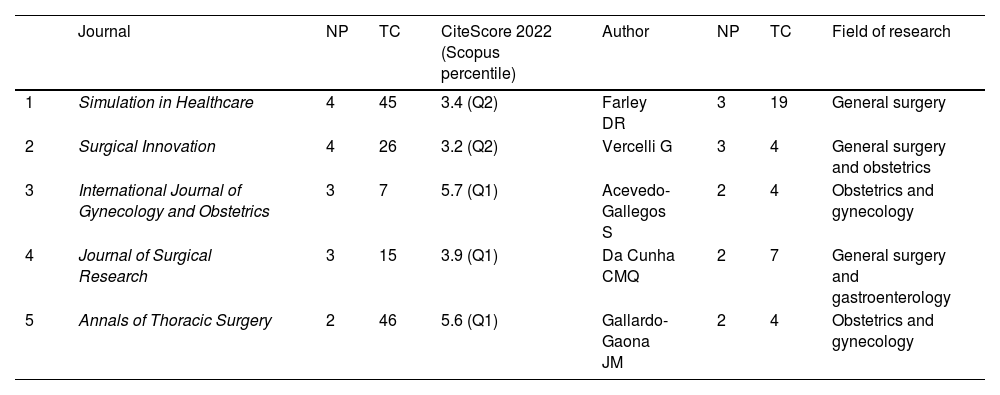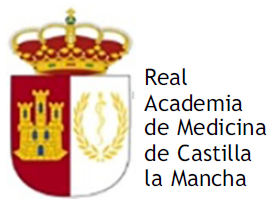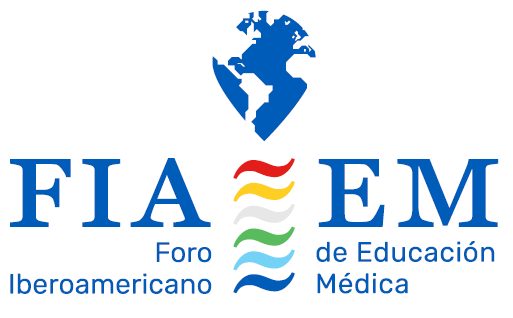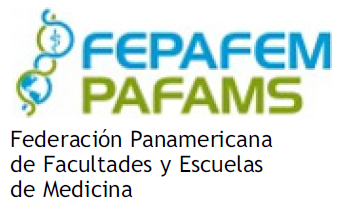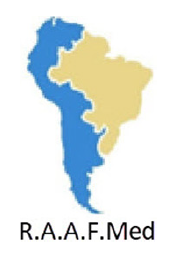Gaining practical experience in health professions education is a significant challenge. Simulation-based training has emerged as a key solution to this issue, but the high costs associated with advanced equipment and software limit accessibility for many institutions. Hence, to close this gap, this study aims to map the research field of low-cost simulation in health professions education through a bibliometric analysis.
MethodsUtilizing a bibliometric study design, we analyzed publications from 2003 to 2022 in the Scopus Database, in accordance to Preferred Reporting Items for Systematic Reviews and Meta-Analyses 2020 guidelines. Publications discussing low-cost simulation in English were included. Data points such as research design, study location, and outcomes were extracted. The Scival Platform and VosViewer were used to analyze publication trends, prolific institutions, authors, journals, and conceptual and intellectual structure.
ResultsThe study found an increase in low-cost simulation research from 2003 to 2022, with significant growth after 2015. Observational studies predominated (68.57%), with general surgery being the most studied specialty. Less than half of the studies reported cost details, and only 2 compared the low-cost model with a standard. The United States led in scientific production, with notable collaboration networks. The keyword co-occurrence and co-citation analyses highlighted 4 main clusters in low-cost simulation research, emphasizing surgical training.
ConclusionsThis investigation highlights the expanding interest in low-cost simulation to enhance access to hands-on training in health professions education, especially under financial constraints. However, the research field requires further development, particularly in validating these models against their more expensive counterparts. Such validation is crucial for ensuring the effectiveness and comparability of low-cost simulation.
Adquirir experiencia práctica en la formación de las profesiones sanitarias es un reto importante. El aprendizaje basado en simulación ha surgido como una solución a este problema, pero los elevados costes asociados a los equipos y programas avanzados limitan la accesibilidad de muchas instituciones. De ahí la necesidad de cerrar esta brecha. Este estudio pretende delimitar el campo de investigación de la simulación de bajo costo en la formación de las profesiones sanitarias mediante un análisis bibliométrico.
MétodosUtilizando un diseño de estudio bibliométrico, analizamos las publicaciones de 2003 a 2022 en la base de datos Scopus, siguiendo las directrices de Preferred Reporting Items for Systematic Reviews and Meta-Analyses 2020. Se incluyeron las publicaciones que discutían la simulación de bajo coste en inglés. Se extrajeron datos como el diseño de la investigación, la ubicación del estudio y los resultados. La plataforma Scival y VosViewer se emplearon para analizar las tendencias de publicación, las instituciones prolíficas, los autores, las revistas y la estructura conceptual e intelectual.
ResultadosEl estudio encontró un aumento de la investigación con simulación de bajo coste desde 2003 hasta 2022, con un crecimiento significativo después de 2015. Predominaron los estudios observacionales (68,57%), siendo la cirugía general la especialidad más estudiada. Menos de la mitad de los estudios informaron sobre detalles de costes, y solo dos compararon el modelo de bajo coste con uno estándar. Estados Unidos lideró la producción científica, con notables redes de colaboración. Los análisis de co-ocurrencia de palabras clave y co-citación destacaron cuatro clusters principales en la investigación sobre simulación de bajo coste, con énfasis en la formación quirúrgica.
ConclusionesEsta investigación pone de relieve el creciente interés en la simulación de bajo coste para mejorar el acceso a la formación práctica en la educación de las profesiones de la salud, especialmente bajo restricciones financieras. Sin embargo, el se requiere un mayor desarrollo, sobre todo en lo que respecta a la validación de estos modelos económicos frente a sus homólogos más caros. Dicha validación es crucial para garantizar la eficacia y comparabilidad de las simulaciones de bajo coste.
Health professions education faces a critical challenge: providing practical, hands-on experience in a safe environment.1 Simulation-based training offers a solution by bridging these gaps. However, the substantial costs of the necessary equipment and software present considerable obstacles for many institutions.2 These financial burdens undermine the quality of education and exacerbate inequalities, particularly impacting programs that are resource-constrained.3 Therefore, there is a need to develop a more accessible and equitable approach to simulation-based training.
Among a range of potential solutions, low-cost simulation is a feasible alternative. This method employs cost-effective materials to construct realistic training scenarios.4 Although previous studies confirm its effectiveness, research has focused on specific areas like urology, otorhinolaryngology, and general surgery.5,6 This narrow focus limits our comprehensive understanding of the field. Therefore, a more profound and extensive knowledge of low-cost simulations is essential to inform and guide future research initiatives.
To meet the identified need, we conducted a bibliometric analysis to map the research field of low-cost simulation (Concept) in health professions education (Context). This analysis documents and assesses foundational work, setting the stage for future studies and practical implementation. Moreover, the findings hold the potential to influence policy decisions and reduce disparities in health professions' education quality.
MethodsA bibliometric study, a methodology that uses quantitative methods on bibliographic data,7 was conducted to analyze the research field of low-cost simulation in health professions education publications indexed in Scopus between 2003 and 2022. To enhance the replicability of our study, we followed the Preferred Reporting Items for Systematic Reviews and Meta-Analyses (PRISMA) 2020 reporting guidelines,8 as done in previous bibliometric analyses in health professions education.9,10
On October 11, 2023, a search was conducted in the Scopus Database using a strategy designed and reviewed collaboratively by two authors. The strategy was as follows: (TITLE-ABS-KEY(Low-fidelity) OR TITLE-ABS-KEY(low-cost) OR TITLE-ABS-KEY(homemade) OR TITLE-ABS-KEY(budget)) AND (INDEXTERMS(«Simulation Training») OR TITLE-ABS-KEY(Simulation)).
The screening of titles and abstracts was performed in duplicate. Publications were included if they fulfilled the following criteria: (1) discussed the development, validation, or implementation of low-cost simulation and (2) were in English.
Then, for each study included, the following data points were extracted: (1) study aim, (2) study design, (3) comparison with a standard commercial model (if applicable) or indication of no model used for comparison, (4) medical specialty employing the low-cost simulation model (e.g., surgery, anesthesiology, emergency medicine) with the specific task, and (5) reported cost of the low-cost simulation model.
Data analysisWe imported the list of identified studies to the Scival Platform (Elsevier).11 Within Scival and Biblioshiny12, we identified key metrics to characterize the studies, including publication trends categorized by the Scopus quartile, the most prolific institutions, authors, and journals based on publication volume, and the most impactful publications regarding total citations. Then, we analyzed cross-country production and established co-occurrence networks through the bibliometrix package in R studio.12 After that, we conducted a co-authorship co-ocurrence, keyword co-occurrence and co-citation analysis using the VosViewer platform13 to identify collaborations, intellectual and conceptual structure.
ResultsFig. 1 shows the overall growth of publication. The growth of studies published in low-cost simulation from 2005 (n=1) to 2022 (n=19). Scientific production did not experience significant growth before 2015. The year with the highest production was 2020, with even more publications in Scopus Quartile1 journals.
Of the 105 studies included, 68.57% (n=72) were observational, 22.86% (n=24) were experimental, and 8.57% (n=9) were review articles as shown in Table 2. Of these, 96 articles had a comparison, with 94 (97.92%) not using a model and 2 (2.08%) comparing against the standard model. General surgery (27.08%) was the most predominant specialty where low-cost simulation was researched, followed by obstetrics and gynecology (14.58%), ear-nose and throat (12.5%), cardiovascular surgery (9.37%), and gastroenterology (6.25%). Less than half of the studies (45.84%) reported the cost of the models.
Characteristics1 of low-cost simulation studies published in the Scopus database from 2003 to 2022.
| Characteristics | N (%) |
|---|---|
| Study design (n=105) | |
| Review | 9 |
| Observational | 72 |
| Experimental | 24 |
| Comparison (n=96) | |
| With standard model | 2 |
| Without any model | 94 |
| Specialty (n=96) | |
| General surgery | 26 |
| Obstetric and gynecology | 14 |
| ENT | 12 |
| Cardiovascular surgery | 9 |
| Gastroenterology | 6 |
| Report of cost* (n=96) | |
| Yes | 52 |
| Not | 44 |
Performance indicators in terms of journals and authors with most publications in the research field of low-cost simulation in health professions education from 2003 to 2022 in the Scopus database.1
| Journal | NP | TC | CiteScore 2022 (Scopus percentile) | Author | NP | TC | Field of research | |
|---|---|---|---|---|---|---|---|---|
| 1 | Simulation in Healthcare | 4 | 45 | 3.4 (Q2) | Farley DR | 3 | 19 | General surgery |
| 2 | Surgical Innovation | 4 | 26 | 3.2 (Q2) | Vercelli G | 3 | 4 | General surgery and obstetrics |
| 3 | International Journal of Gynecology and Obstetrics | 3 | 7 | 5.7 (Q1) | Acevedo-Gallegos S | 2 | 4 | Obstetrics and gynecology |
| 4 | Journal of Surgical Research | 3 | 15 | 3.9 (Q1) | Da Cunha CMQ | 2 | 7 | General surgery and gastroenterology |
| 5 | Annals of Thoracic Surgery | 2 | 46 | 5.6 (Q1) | Gallardo-Gaona JM | 2 | 4 | Obstetrics and gynecology |
In Table 1, Simulation in Healthcare performed the best in terms of indicators, with 45 CT and 4 NP and a CiteScore 2022 of 3.4 (Q2). The International Journal of Gynecology and Obstetrics had the highest CiteScore 2022, ranking 5.7 in Q1. The five most productive authors' research fields were general surgery and obstetrics. Furthermore, when applying Lotka's law, 514 (94%) authors had only one publication in low-cost simulation. Additionally, 31 authors (5.7%) had 2 publications. However, only 2 authors (0.3%) had 3 publications. Moreover, all most impactful publication were in the surgical fields (see Table 3).
Most cited papers in the research field of low-cost simulation in health professions education from 2003 to 2022 in the Scopus database.
| Rank | Title | Author, year - country | Total citations | Study type - design (Field) | Aim | Commentary |
|---|---|---|---|---|---|---|
| 1 | Full immersion simulation: validation of a distributed simulation environment for technical and non-technical skills training in Urology | Brewin, 2014 - United Kingdom | 58 | Original - mixed method study (Urology) | To evaluate the educational impact of distributed simulation (DS) in urology training | - DS demonstrated face, content, and construct validity.- DS was well-received by learners |
| 2 | Home Surgical Skill Training Resources for Obstetrics and Gynecology Trainees During a Pandemic | Hoopes, 2020 - United States | 51 | Commentary - Literature review (Obstetric and Gynecology) | To explore available resources for remote surgical training with attention to the three core skills addressed, cost, and feasibility | - Offers a detailed list of resources from box trainers to homemade low-cost simulators for residents to use during the pandemic |
| 3 | A practical 3D printed simulator for endoscopic endonasal transsphenoidal surgery to improve basic operational skills | Wen, 2016 - China | 40 | Experimental study with a pre-post design (neurology and pediatrics) | To present a practical three-dimensional (3D) printed simulator to comprehensively and effectively accelerate the learning curve of endonasal endoscopic transsphenoidal endonasal surgery (EETS) | - Using a three-dimensional simulator improved EETS skills in neurosurgeons during training- An economical, simple, and easy-to-use simulator was implemented |
| 4 | Addressing gaps in surgical skills training by means of low-cost simulation at Muhimbili University in Tanzania | Taché, 2009 - United States | 34 | A quasi-experimental study with pre and post-evaluation(Human Resources for Health) | To describe the creation and evaluation of a surgical skills training course developed and implemented by the Department of Surgery for senior medical students | - The study demonstrates a significant improvement in trainees' surgical skills after participating in a two-day training course using low-cost simulation- Strategies were developed to assess the durability of acquired skills and preparedness to face real surgical emergencies |
| 5 | Open Lobectomy Simulator Is an Effective Tool for Teaching Thoracic Surgical Skills | Carter, 2009 - United States | 31 | Original - Experimental (Thoracic Surgical) | To demonstrate the ability of a thoracic surgery simulator for skills development performing a common thoracic surgery procedure | - Lobectomy simulation demonstrates significant improvements in subjective and objective measures by the third week with weekly repetition- The average operative time was reduced, and the average task-specific score, knowledge-based test scores, and overall performance scores improved significantly |
| 6 | Using 3D Printing (Additive Manufacturing) to Produce Low-Cost Simulation Models for Medical Training | Military Medicine | Lichtenberger, 2018 - United States | 30 | Original - descriptive experimental (different medical specialties) | Describes customized, task-specific simulation models derived from 3D printing in clinical settings and medical professional training programs | - Numerous custom simulation models have been completed with resulting task trainers designed for procedures, including removal of ocular foreign bodies, ultrasound-guided joint injections, nerve block injections, and various suturing and reconstruction procedures |
| 7 | A short trauma course for physicians in a resource-limited setting: Is low-cost simulation effective? | Pringle, 2015 - United States | 28 | Experimental study with a pre-post design(traumatology) | To evaluate the effectiveness of a short course on trauma, using traditional didactics as well as newer simulation methods developed for use in low-resource settings | - A significant reduction in the time required to perform critical actions was observed, suggesting that the low-cost simulation effectively improved participants' practical skills- There is a significant improvement in overall written test scores, indicating a positive impact on participants' knowledge of trauma concepts |
| 8 | Emerging Role of Three-Dimensional Printing in Simulation in Otolaryngology | VanKoevering, 2017 - United States | 28 | Commentary - Literature review (otorhinolaryngology) | It highlights the fundamental components of 3D printing and the multitude of subspecialty simulators that have been developed with the aid of 3D printing | -The extensive use of 3D printing in the creation of otologic simulators in complex anatomical areas of this region is highlighted- The increasing use of 3D printing in the simulation of procedures in the sinonasal and laryngeal areas is mentioned, with educational applications and in surgical decision-making |
| 9 | Low-Cost Simulation to Teach Anesthetists’ Non-Technical Ski…: Anesthesia & Analgesia | Skelton, 2016 - Canada | 27 | Prospective randomized controlled trial (anesthesiology) | To investigate whether a low-cost simulation model with good psychological fidelity can be used effectively to teach non-technical skills (ANTS) in anesthesiologists during cesarean delivery in Rwanda | -It highlights the effectiveness of simulation as a teaching tool and emphasizes the ability of participants to apply newly acquired skills in real clinical situations after a single teaching session- The study highlights the feasibility and effectiveness of low-cost simulation as a teaching method to improve the clinical practice of anesthesiologists |
| 10 | Papaya: a simulation model for training in uterine aspiration | Maureen, 2005 - United States | 18 | Descriptive and Evaluative Study(Family Medicine) | The methods and results of the evaluation of a low-cost manual vacuum aspiration (MVA) series were described | - Papaya simulation significantly improves the skills and confidence of physicians in performing uterine procedures- Most participants value the simulation with papayas as highly beneficial and that it would change their clinical management |
According to Fig. 2A, the United States (US) has the highest scientific production and is the center of collaboration networks in the field. The largest production in the field is in North America (US, Mexico, and Canada), with 40 studies. Fig. 2B shows a relationship between Ghanaian, Indian, and US production regarding collaboration networks.
We employ a keyword co-occurrence analysis (3A) and co-citation analysis (3B) to delve into the conceptual and intellectual structure. Fig. 3A identified 4 clusters: learning curve (yellow), surgical model development (red), simulation in surgery (blue), and simulation in obstetrics (green). In Fig. 3B, the co-citation analysis shows 4 clusters focused on developing the surgical model in the green, yellow, and blue clusters and the transferability of these models in the curriculum as shown in the red cluster. Therefore, this suggests that the field of low-cost simulation in health professions education is dominated by surgical simulation training.
DiscussionSummary of findingsWe conducted a bibliometric study to delimit the scope of low-cost simulation research in health professions education. Our main findings are as follows: (1) The growth of studies published in low-cost simulation increased from 2005 to 2022, with the highest production in 2020. (2) Of the 105 studies included, 68.57% were observational, 22.86% were experimental, and 8.57% were review articles. (3) Less than half of studies reported the cost of models, and only two out of 96 studies compared the low-cost models with the standard ones. (4) The analyses showed that surgery was the main focus of study in low-cost simulation in health professions education.
Strengths and limitationsThis study had several strengths, such as the peer-review process in all stages, a well-crafted research question, and the employment of both descriptive and analytical methods to study the field. Despite these strengths, it also presents some limitations. First, we only used the Scopus database, which, although previous research suggests that it covers the Medline database and is equal or superior to the Web of Science, may hinder our full understanding of the extension of the field.14,15 Second, the limited literature volume posed challenges for a more comprehensive analysis. However, to surpass this limitation, we extracted key datapoints from identified studies such as comparator models or costs. Hence, adding relevant information to our study. Lastly, we did not analyze quality or bias among studies as it was out of the scope of a bibliometric and due to the lack of a checklist to assess low-cost simulation studies.
Interpretation of findingsTo our knowledge, this is the first bibliometric study on low-cost simulation for health professions education. The growth of research from 2015 underscores the need for viable solution to bring equitable access to health professions education, as was described in previous studies.16 While noble, it is of importance to notice that less than 1% of the identified studies compare the low-cost models with standard models.This raises a concern regarding the validity of these models, a finding similar to previous reviews in low-cost simulation.5,17 Although disappointing, these findings reflects the novelty of the topic and set a future direction for research in the field, being one of the major concerns—the validity of low-cost simulation.
Contrary of what we expected, the global south was underrepresented in the field, which is aligned with a previous systematic review.18 This underscores a well-described gap in health professions education literature, that may be explained due to lack of funding, deficits in faculty capacity, or time protected for research.18–20 These potential barriers hinder the potential that low-cost simulation may offer for low-resource countries. Hence, policy- and decision-makers should take this into account for further development in simulation training.
Most of the research was conducted in the surgical field. This is in accordance to previous systematic reviews focused on surgery, ear-nose and throat, and urology.5,21,22 This may be explained due to that low-cost simulation may pose as a feasible option for implementing mastery learning in health professions education, specifically for skills-acquisition.23,24 In this context, trainees could develop low-cost models for specific procedures such as laparoscopic simulator or an amniocentesis model for home training. To exemplify this, employing a low-cost models for amniocentesis, Ramirez-Abarca et al. were able to determine the number of procedures to attain competency in maternal–fetal medicine fellows, which was 255 procedures, something that may be not attainable in standard models.25 Hence, to our understanding, the true potential of low-cost simulation is in its integration with mastery learning and for skills-acquisition.Thus, future research should address the learning curve of essential procedures employing low-cost models and may expand towards low-cost simulations models for task such as history taking, physical examination or communication training.
ConclussionsIn conclusion, research on low-cost simulation has increased recently, but its quality needs to be addressed. Most studies were observational with lack of standard comparators. As a result, most of the studies reported model that need to be validated at different levels of education. However, these low-cost models has the potential to help medical schools reduce future costs and increase competency in simulation-based learning.
FundingThis work received no funding.









